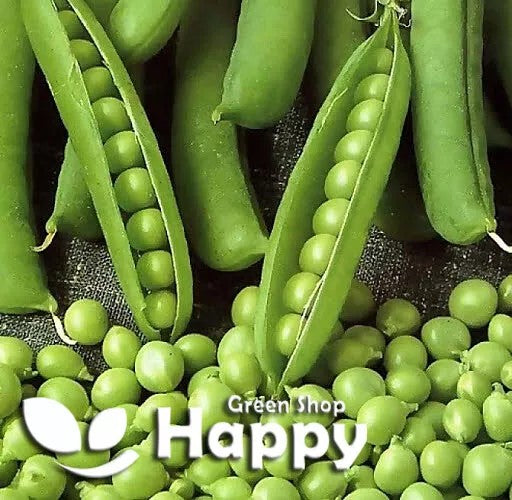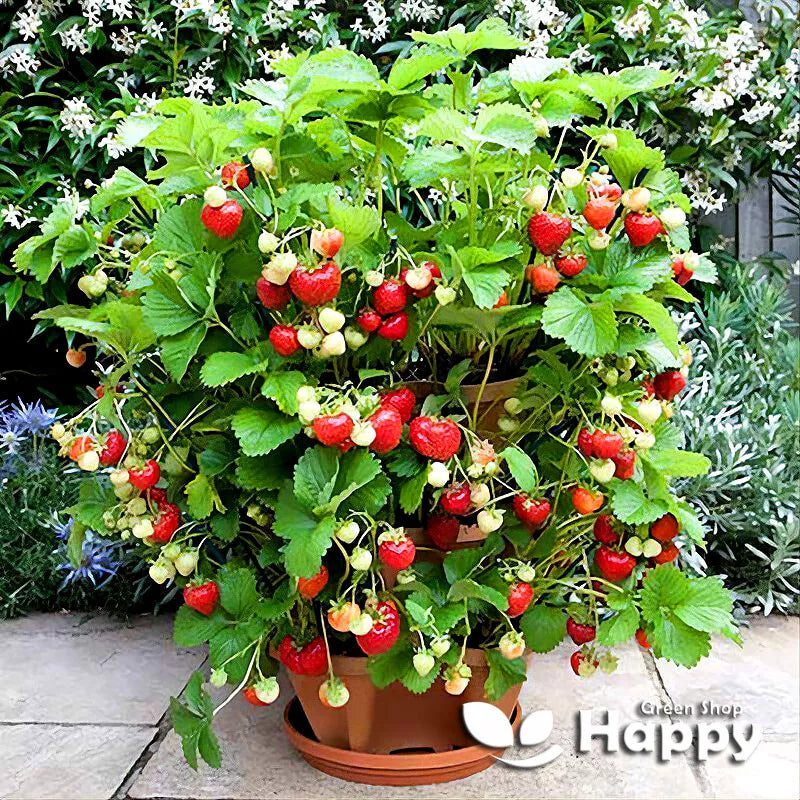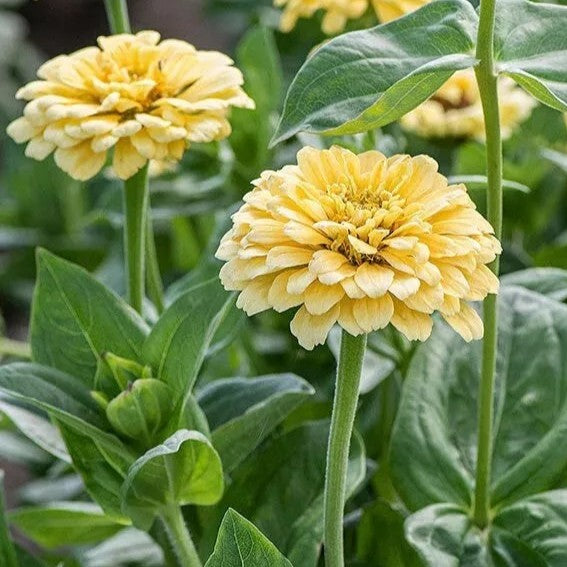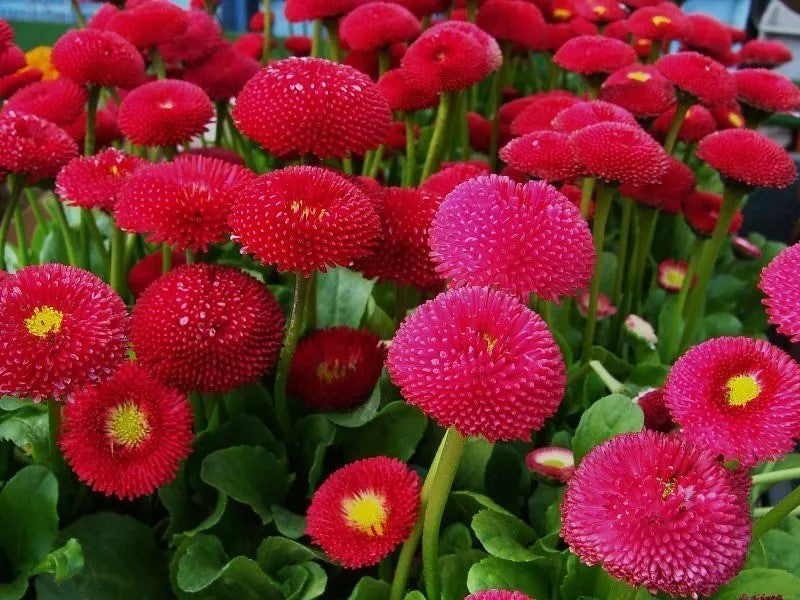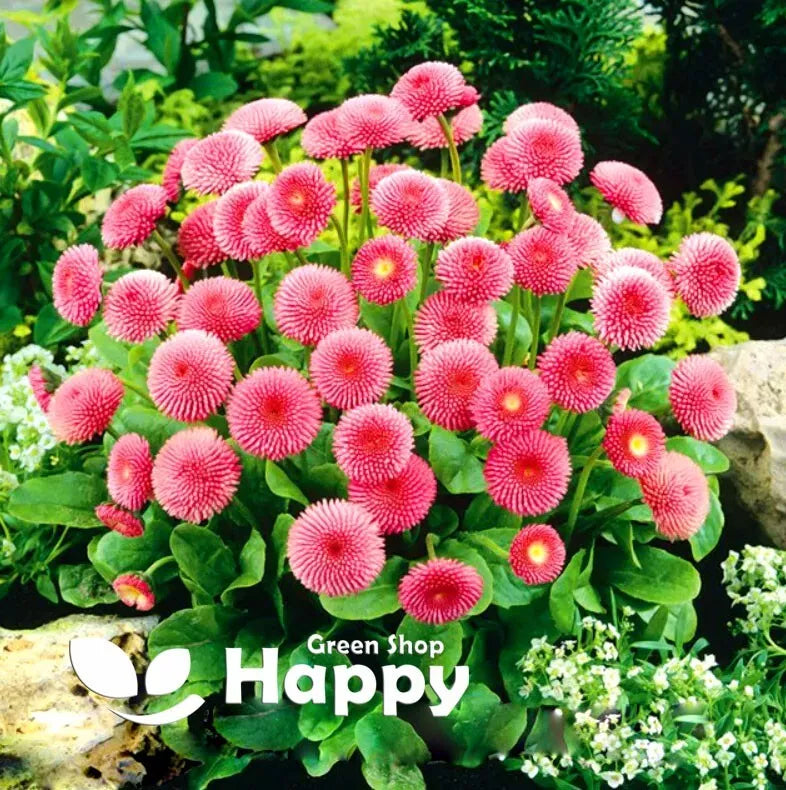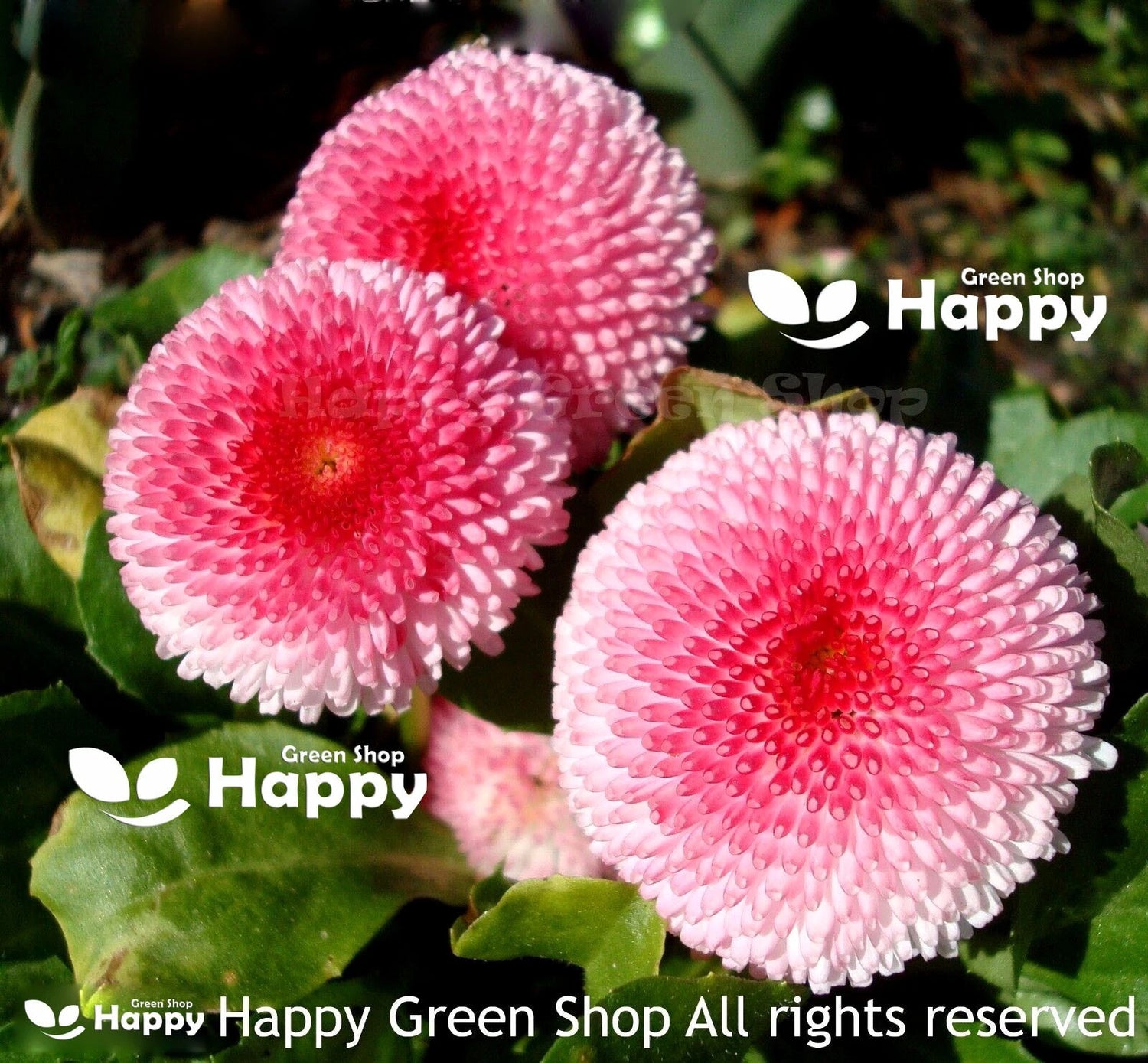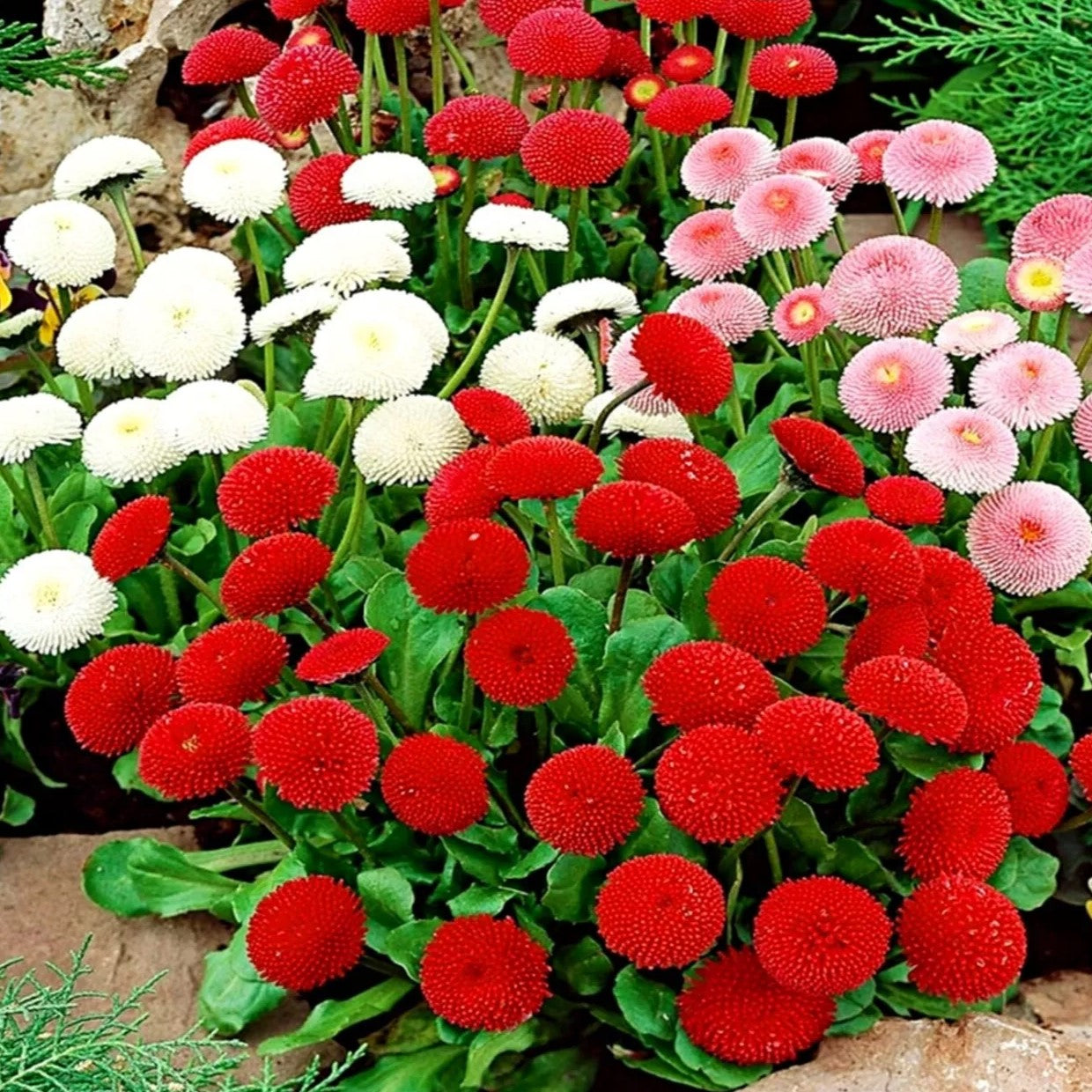Sort by:
326 products
326 products
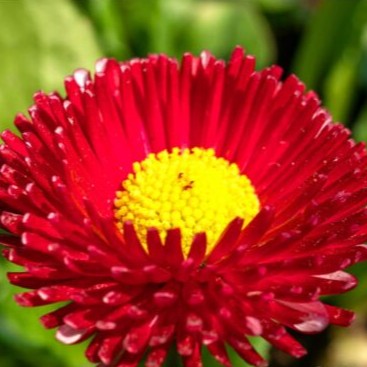

English daisy 'Super enorma' red - 500 seeds (Bellis perennis) Large flowers
£1.15
Unit price perEnglish daisy 'Super enorma' red - 500 seeds (Bellis perennis) Large flowers
£1.15
Unit price perEnglish Daisy 'Super Enorma' Red Seeds (Bellis perennis)
The English Daisy ‘Super Enorma’ Red is a premium variety renowned for its extra-large double blooms in a rich, velvety red shade. Compared to traditional English daisies, ‘Super Enorma’ produces bigger, showier flowers that stand out beautifully in spring borders, containers, and cottage gardens. This hardy perennial, often grown as a biennial, brings an early burst of dramatic color and pairs perfectly with spring bulbs and other bedding plants.
What Makes It Special
-
Extra-large blooms for maximum impact
-
Vivid deep red pompon flowers that brighten spring gardens
-
Compact growth yet highly floriferous
-
Hardy and reliable, ideal for early-season displays
Key Features
-
Botanical name: Bellis perennis
-
Variety: Super Enorma Red
-
Flower size: Larger than standard Bellis varieties
-
Height/Spread: 15–20 cm tall, 15–20 cm spread
-
Position: Full sun or partial shade; moist, fertile, well-drained soil
-
Flowering period: Early spring to early summer
-
Lifespan: Perennial, usually cultivated as a biennial
Ideal For
-
Spring bedding and borders
-
Containers and pots for dramatic color
-
Cottage gardens and mixed plantings
-
Pairing with tulips, hyacinths, and pansies for classic displays
-
Gardeners seeking large, showy daisies in bold red
Sowing Instructions
-
When to sow: May to July for flowers the following spring.
-
How to sow:
-
Sow on the surface of moist seed compost, as seeds need light to germinate.
-
Keep at 15–20°C; germination takes 14–28 days.
-
-
Transplant/Thin: Prick out seedlings when large enough to handle and grow on in cooler conditions. Harden off before planting 15–20 cm apart.
-
Care: Regular deadheading encourages longer flowering. Protect young plants from harsh frost.
English Daisy 'Pomponette' White Seeds (Bellis perennis)
The English Daisy ‘Pomponette’ White is a refined garden classic, producing neat, double pompon-like flowers in pure white. Compact and long-flowering, it brings freshness and elegance to borders, pots, and spring bedding schemes. Its timeless charm makes it perfect for traditional cottage gardens and for pairing with tulips, violas, or primroses.
What Makes It Special
-
Produces pure white, pompon-style blooms for a clean and elegant look
-
Compact, hardy, and easy to grow in most gardens
-
Provides a long flowering season from early spring onwards
-
Excellent choice for classic bedding schemes and container planting
Key Features
-
Botanical name: Bellis perennis
-
Variety: Pomponette White
-
Height/Spread: 15–20 cm tall, 15–20 cm spread
-
Position: Full sun or partial shade; thrives in moist, well-drained soil
-
Flowering period: Early spring to early summer
-
Lifespan: Perennial, often grown as a biennial
Ideal For
-
Cottage gardens and traditional flower beds
-
Spring bedding displays with tulips and primroses
-
Pots, containers, and window boxes
-
Low-growing borders and edging
-
Adding a soft, white contrast to mixed planting schemes
Sowing Instructions
-
When to sow: Late spring to mid-summer (May–July) for flowers the following spring.
-
How to sow:
-
Sow thinly on the surface of moist seed compost.
-
Do not cover, as seeds need light to germinate.
-
Keep moist at 15–20°C. Germination takes 14–28 days.
-
-
Transplant/Thin: When seedlings are large enough to handle, transplant to pots or trays. Plant outdoors 15–20 cm apart.
-
Care: Deadhead faded blooms to prolong flowering. Protect young plants from severe frost.
English Daisy 'Pomponette' Red Seeds (Bellis perennis)
The English Daisy ‘Pomponette’ Red is a compact and eye-catching spring flower that produces dense, pompon-shaped double blooms in deep crimson to bright scarlet shades. Perfect for borders, edging, containers, or spring bedding, these hardy daisies bring vibrant early-season color and combine beautifully with tulips, violas, and forget-me-nots.
What Makes It Special
-
Striking pompon-style flowers in vivid red tones
-
Compact and hardy perennial, often grown as a biennial
-
Early-flowering, adding bold color in spring
-
Easy to grow and reliable in many garden settings
Key Features
-
Botanical name: Bellis perennis
-
Variety: Pomponette Red
-
Height/Spread: 15–20 cm tall, 15–20 cm spread
-
Position: Full sun or partial shade; moist, fertile, well-drained soil
-
Flowering period: Early spring to early summer
-
Lifespan: Perennial, usually treated as a biennial
Ideal For
-
Spring borders and edging
-
Containers, pots, and window boxes
-
Cottage gardens and traditional bedding displays
-
Pairing with spring bulbs like tulips, daffodils, and hyacinths
-
Adding a bold red highlight among softer pastel flowers
Sowing Instructions
-
When to sow: May to July for flowers the following spring.
-
How to sow:
-
Sow on the surface of moist seed compost, as seeds need light to germinate.
-
Keep at 15–20°C; germination takes 14–28 days.
-
-
Transplant/Thin: Prick out seedlings when large enough, then grow on in cooler conditions. Harden off before planting 15–20 cm apart.
-
Care: Remove faded flowers to prolong blooming. Protect young plants from severe frost.
English Daisy 'Pomponette' Pink Seeds (Bellis perennis)
The English Daisy ‘Pomponette’ Pink is a charming variety that produces neat, double pompon-shaped blooms in rich shades of soft to deep pink. Compact and easy to grow, it adds a delightful splash of color to borders, containers, and spring bedding displays. A timeless favorite, perfect for pairing with tulips, violas, and primroses.
What Makes It Special
-
Distinctive pompon-style flowers in shades of pink
-
Compact, hardy, and low-maintenance
-
Early and long flowering from spring through early summer
-
Ideal for creating vibrant, colorful borders and edging
Key Features
-
Botanical name: Bellis perennis
-
Variety: Pomponette Pink
-
Height/Spread: 15–20 cm tall, 15–20 cm spread
-
Position: Full sun or partial shade; prefers moist, well-drained soil
-
Flowering period: Early spring to early summer
-
Lifespan: Perennial, often grown as a biennial
Ideal For
-
Cottage gardens and spring bedding schemes
-
Bright borders and edging
-
Containers, pots, and window boxes
-
Pairing with spring bulbs such as tulips and daffodils
-
Creating a soft pink contrast in mixed planting displays
Sowing Instructions
-
When to sow: Late spring to mid-summer (May–July) for flowers the following spring.
-
How to sow:
-
Sow thinly on the surface of moist seed compost.
-
Do not cover, as seeds need light to germinate.
-
Maintain moisture at 15–20°C. Germination takes 14–28 days.
-
-
Transplant/Thin: When seedlings are large enough, transplant into pots or trays. Harden off before planting outdoors 15–20 cm apart.
-
Care: Deadhead regularly to encourage more blooms. Protect young plants from harsh frost.
English Daisy 'Pomponette' Mixed Seeds (Bellis perennis)
The English Daisy ‘Pomponette’ is a charming cottage garden favorite, loved for its dense pompon-like blooms in shades of red, pink, and white. Compact and cheerful, these dainty flowers create vibrant color displays in borders, pots, and spring bedding schemes. Their long flowering period and old-fashioned charm make them a must-have for any traditional garden.
What Makes It Special
-
Produces unique pompon-style blooms in bright mixed colors
-
Hardy, compact, and reliable for early spring displays
-
A classic cottage garden flower with enduring charm
-
Excellent for edging, borders, and containers
Key Features
-
Botanical name: Bellis perennis
-
Variety: Pomponette Mixed
-
Height/Spread: 15–20 cm tall, 15–20 cm spread
-
Position: Full sun or partial shade; prefers moist, well-drained soil
-
Flowering period: Early spring to early summer
-
Lifespan: Perennial, often grown as a biennial
Ideal For
-
Cottage and traditional gardens
-
Spring bedding displays with tulips and primroses
-
Pots, containers, and window boxes
-
Low-growing borders and edging
-
Naturalizing in lawns or meadow-style gardens
Sowing Instructions
-
When to sow: Late spring to mid-summer (May–July) for flowering the following spring.
-
How to sow:
-
Sow thinly on the surface of moist seed compost and press lightly.
-
Do not cover, as seeds need light to germinate.
-
Keep moist at 15–20°C. Germination takes 14–28 days.
-
-
Transplant/Thin: Move seedlings to individual pots or trays when large enough. Plant outdoors 15–20 cm apart.
-
Care: Remove faded blooms to prolong flowering. Protect from harsh frost in the first year.
Edible Flowers Mix – 0.6g Seeds
Edible Flowers Mix is a delightful assortment of colorful, fragrant blooms perfect for culinary and decorative use. From salads and desserts to drinks and garnishes, these flowers bring both beauty and flavor to your kitchen. Easy to grow, they thrive in borders, containers, and small garden beds, making your garden as tasty as it is vibrant.
Why Grow "Edible Flowers Mix"
-
Colorful, fragrant blooms perfect for culinary use
-
Easy to grow in garden beds, containers, or borders
-
Long flowering period from spring to autumn
-
Attracts pollinators while enhancing edible creations
Key Features
-
Type: Annual mix of edible flowers
-
Height: Varies by variety, typically 15–60 cm
-
Flowering: Spring to autumn
-
Position: Full sun to partial shade
-
Uses: Culinary garnishes, salads, desserts, drinks, garden display
Ideal For
-
Edible and decorative garden planting
-
Culinary use in salads, desserts, and drinks
-
Pollinator-friendly garden spaces
-
Borders, containers, and small beds
Sowing & Growing
-
Sow indoors: February–April in seed trays
-
Sow outdoors: March–May in prepared soil
-
Germination: 7–20 days depending on variety
-
Thin seedlings to recommended spacing per variety
-
Prefers sunny, well-drained soil
-
Deadhead to encourage prolonged flowering
Dwarf Zinnia ‘Swirls’ – Seeds
(Zinnia elegans)
Dwarf Zinnia ‘Swirls’ produces charming, compact plants with vibrant, multi-colored swirled blooms. Perfect for borders, containers, and flower beds, this long-flowering annual attracts pollinators and adds cheerful color to any garden. Easy to grow and low-maintenance, it’s ideal for both beginner and experienced gardeners.
Why Grow Dwarf Zinnia ‘Swirls’?
-
Colorful, swirled blooms in a compact habit
-
Long-flowering, cheerful annual
-
Attracts bees and butterflies
-
Perfect for borders, containers, and flower beds
Key Features
-
Type: Annual
-
Height: 25–35 cm
-
Flowers: Summer to autumn
-
Position: Full sun
-
Soil: Well-drained, moderately fertile
Ideal For
-
Borders, containers, and garden beds
-
Pollinator-friendly plantings
-
Cut flowers and floral arrangements
-
Low-maintenance colorful display
Sowing & Growing
-
Sow indoors: February–April in seed trays
-
Sow outdoors: April–May in prepared soil
-
Germination: 7–14 days at 18–22°C
-
Spacing: 20–25 cm apart
-
Care: Moderate watering; deadhead to encourage continuous blooms
Dwarf Zinnia 'Pepito' Mix – Seeds
(Zinnia elegans)
Dwarf Zinnia 'Pepito' Mix is a charming, compact annual that produces an abundance of small, vibrant blooms in a lively mix of colours, including reds, pinks, oranges, and yellows. Perfect for borders, rockeries, and containers, its dense, bushy growth ensures a long season of continuous flowering. Easy to grow and low-maintenance, this variety also attracts pollinators, adding life and colour to any garden.
Key Features
-
Type: Half-hardy annual
-
Height: 20–30 cm
-
Spread: 25–35 cm
-
Flowering: June–October
-
Position: Full sun
-
Soil: Well-drained, fertile soil
Ideal For
-
Rockeries and border edging
-
Container planting
-
Pollinator-friendly gardens
-
Summer floral displays
Sowing & Growing
-
Sow indoors: March–April at 18–22°C
-
Sow outdoors: May, after last frost
-
Germination: 7–14 days
-
Thin or transplant to 20–25 cm spacing
-
Deadhead regularly to prolong flowering
Dwarf Sunflower 'Teddy Bear' Seeds (Helianthus annuus)
The Dwarf Sunflower 'Teddy Bear' is a charming compact sunflower variety with soft, fully double golden blooms that resemble fluffy pompons. Growing only about 40–60 cm tall, this dwarf type is perfect for smaller gardens, containers, and borders while still delivering the cheerful impact of traditional sunflowers. Its long-lasting flowers are excellent for cutting and loved by pollinators.
What Makes It Special
-
Compact, dwarf habit ideal for pots and small gardens
-
Double pompom-style golden blooms
-
Long flowering period with continuous color
-
Attracts bees and butterflies while brightening patios and borders
Key Features
-
Botanical name: Helianthus annuus
-
Variety: 'Teddy Bear'
-
Seed count: Approx. seeds per pack
-
Height/Spread: 40–60 cm tall, 20–30 cm spread
-
Position: Full sun; well-drained soil
-
Flowering period: July–September
Ideal For
-
Containers and patio pots
-
Small gardens or children’s gardens
-
Front borders and bedding displays
-
Pollinator-friendly planting schemes
Sowing Instructions
-
When to sow: March–May indoors; April–June outdoors
-
How to sow:
-
Sow seeds 1.5 cm deep in pots or directly outdoors after frost
-
Germination takes 7–14 days at 15–20°C
-
-
Transplanting: Harden off and plant out seedlings after the last frost
-
Care: Water well in dry periods; compact plants rarely need staking.
Showing 216/326

